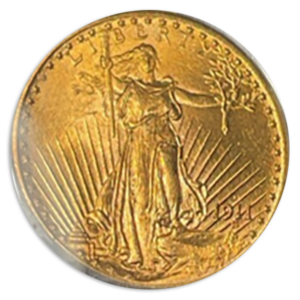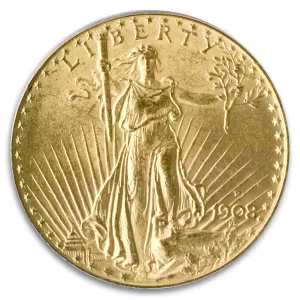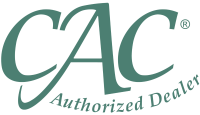1890-CC $20 Liberty PCGS MS60 CAC
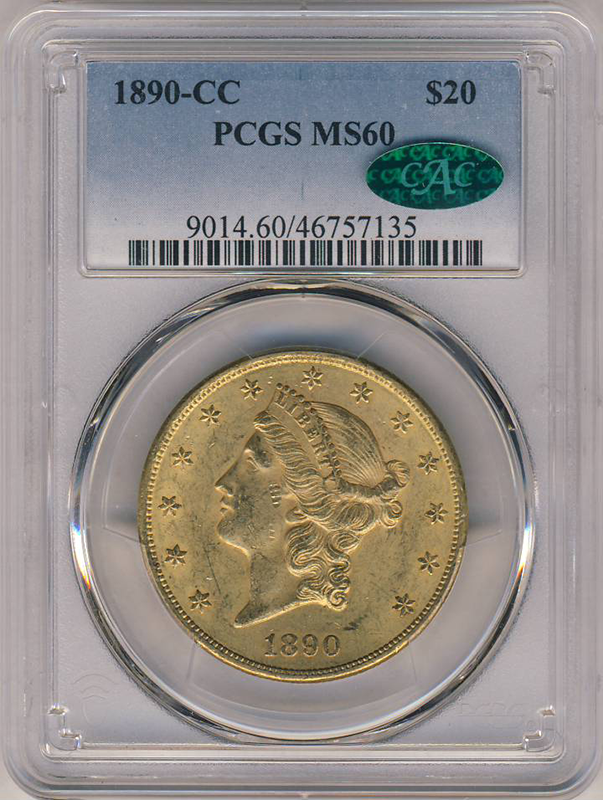


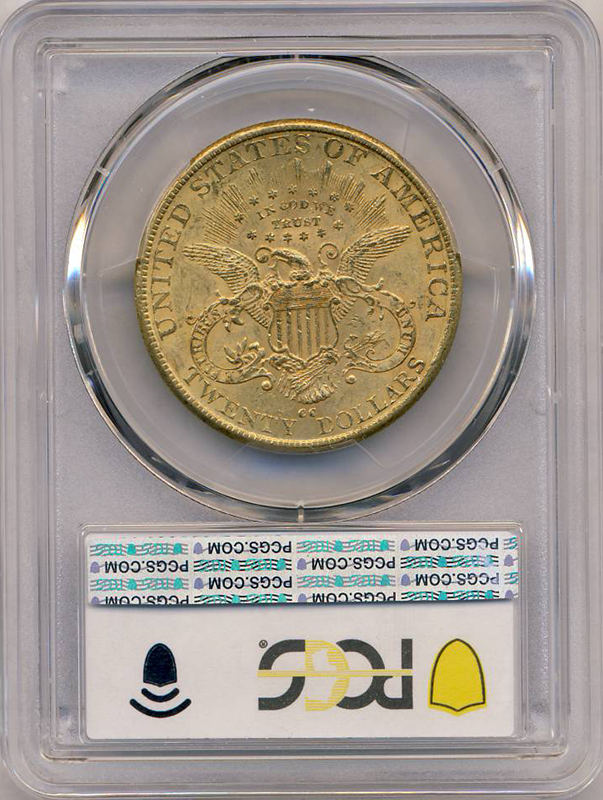

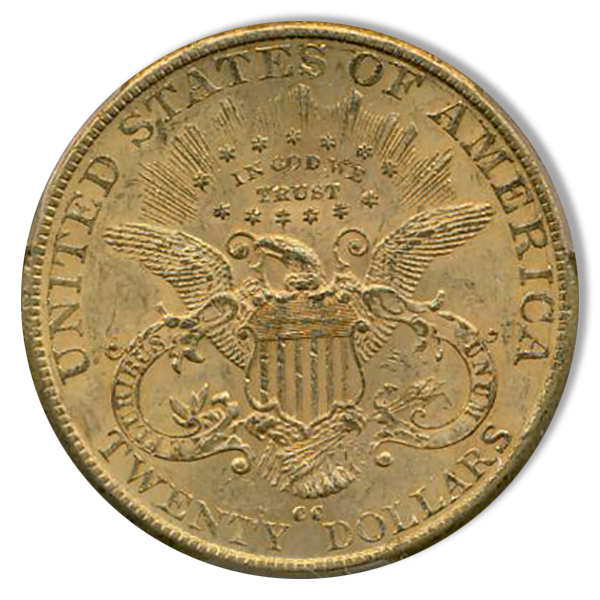

In this Type, there are no alterations to the front side, but several adjustments were made to the reverse. The oval formation of stars above the eagle's head was expanded, and the motto "IN GOD WE TRUST" was incorporated within that oval. The rays above the oval were also modified. The shield now features slightly curved sides, as opposed to the previous Type with straight sides, and the eagle's tail feathers are positioned lower and closer to the denomination lettering. Minor modifications were also applied to the ends of the scrolls, the number of leaves on the scrolls, and the placement of the wing tips.
The inclusion of the motto on our coinage was initiated following the encouragement of Reverend Mark R. Watkinson of Ridleyville, Pennsylvania. The uncertainties and horrors of the Civil War stirred strong religious sentiments among the population, and Rev. Watkinson believed this should be acknowledged. Secretary of the Treasury, Salmon P. Chase, concurred with this sentiment. Utilizing his discretion regarding coin inscriptions, Chase first introduced the motto on the 2-cent piece in 1864. Originally, the motto was intended to be expressed as "In God Our Trust," but Chase's affiliation with his alma mater may have influenced the final wording. Secretary Chase was a graduate of Brown University, whose motto, "IN DEO SPERAMUS," translates to "IN GOD WE HOPE." It is believed that Chase had this in mind when he made the ultimate decision regarding the exact phrasing of the motto.
The Coin Act of March 3, 1865, granted the Treasury the discretionary power to place the motto "on all coins able to accommodate it," referring to coins large enough to accommodate the inscription. The Mint interpreted this to encompass all silver coins larger than a dime, half eagles, eagles, and double eagles. However, it wasn't until 1908 that Congress mandated the inclusion of the motto on gold and silver coins. In 1955, Congress passed legislation that required the motto to be featured on all coins.
The demand for Type 2 Double Eagles primarily comes from collectors who specialize in various coin types. While some collectors may acquire only one example of this type, many seek specimens from each of the three Mints that produced these coins: Philadelphia, San Francisco, and Carson City. Only a few enthusiasts embark on the challenging endeavor of assembling a complete date and mintmark set, largely due to the associated costs. The rarest issue within this Type is the 1870-CC, with a meager mintage of just 3,789 pieces. All 1870-CC Double Eagles are exceedingly rare and carry a substantial price tag. To underscore their rarity, between the two major grading services, PCGS and NGC, only 132 coins have ever received certification, and none have achieved the uncirculated designation. Furthermore, neither service has certified any example graded higher than AU-55.
The inclusion of the motto on our coinage was initiated following the encouragement of Reverend Mark R. Watkinson of Ridleyville, Pennsylvania. The uncertainties and horrors of the Civil War stirred strong religious sentiments among the population, and Rev. Watkinson believed this should be acknowledged. Secretary of the Treasury, Salmon P. Chase, concurred with this sentiment. Utilizing his discretion regarding coin inscriptions, Chase first introduced the motto on the 2-cent piece in 1864. Originally, the motto was intended to be expressed as "In God Our Trust," but Chase's affiliation with his alma mater may have influenced the final wording. Secretary Chase was a graduate of Brown University, whose motto, "IN DEO SPERAMUS," translates to "IN GOD WE HOPE." It is believed that Chase had this in mind when he made the ultimate decision regarding the exact phrasing of the motto.
The Coin Act of March 3, 1865, granted the Treasury the discretionary power to place the motto "on all coins able to accommodate it," referring to coins large enough to accommodate the inscription. The Mint interpreted this to encompass all silver coins larger than a dime, half eagles, eagles, and double eagles. However, it wasn't until 1908 that Congress mandated the inclusion of the motto on gold and silver coins. In 1955, Congress passed legislation that required the motto to be featured on all coins.
The demand for Type 2 Double Eagles primarily comes from collectors who specialize in various coin types. While some collectors may acquire only one example of this type, many seek specimens from each of the three Mints that produced these coins: Philadelphia, San Francisco, and Carson City. Only a few enthusiasts embark on the challenging endeavor of assembling a complete date and mintmark set, largely due to the associated costs. The rarest issue within this Type is the 1870-CC, with a meager mintage of just 3,789 pieces. All 1870-CC Double Eagles are exceedingly rare and carry a substantial price tag. To underscore their rarity, between the two major grading services, PCGS and NGC, only 132 coins have ever received certification, and none have achieved the uncirculated designation. Furthermore, neither service has certified any example graded higher than AU-55.
A LITTLE STICKER MAKES A BIG DIFFERENCE.
Within each number of the coin grading scale is a small range of condition from low-end to high-end. Certified coins of the same grade can be of varying quality. Many of today’s collectors want coins that are solid or premium quality for their assigned grade. CAC holds coins to a higher standard so you can be confident in the value of yours. We verify previously graded coins … and award our sticker only to those coins that meet the standard for today’s selective buyer.
WHAT THE CAC STICKER MEANS:
- Verified. Your coin has been verified as meeting the standard for strict quality within its grade.
- Guaranteed. CAC stands behind our verification.
THE CAC STICKER IS BACKED BY EXPERIENCE.
CAC was founded by leading members of the numismatic community, including John Albanese, a respected authority on coin grading and the rare coin market.





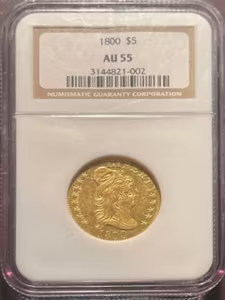
 Quick View
Quick View